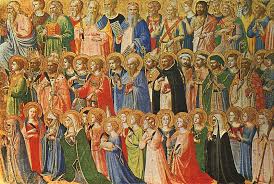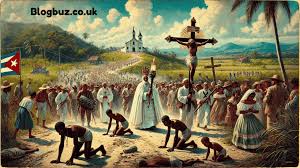Table of Contents
Introduction to St Lazarus Abba Kwi Cuban
St Lazarus Abba Kwi Cuban is not only a saint; he embodies the vibrant spirit of Cuba itself. With a wealthy tapestry woven from records, devotion, and subculture, this respected figure holds a special area inside the hearts of many Cubans.
His legacy transcends mere religious significance, reaching into the island’s art, song, and everyday existence. As we delve deeper into his tale, you will discover how St Lazarus has become a symbol of desire and resilience for endless people looking for solace in their religion. Join us as we discover the charming global surrounding St Lazarus Abba Kwi Cuban—an adventure full of rituals, legends, and an unbreakable connection to the heritage that continues to thrive.
History and Origin of the Saint

St Lazarus Abba Kwi Cuban has roots intertwined with Christian and Afro-Cuban traditions. His origins are traced again to the biblical parent of Lazarus, who was raised from the lifeless using Jesus. This foundational tale resonates deeply inside the network, symbolizing wish and resurrection. As enslaved Africans were brought to Cuba, they blended their religious beliefs with Catholicism. They followed St Lazarus as a protector in opposition to illness and misfortune.
The saint became a focal point for recuperation rituals.” Abba Kwi,” derived from Yoruba language factors, signifies father or ancestor. This reflects his significance, not simply as a saint but also as a spiritual chief in local perception structures. Over centuries, St Lazarus evolved into an emblem of resilience for many Cubans dealing with adversity. The amalgamation of cultures created a rich tapestry around this revered determine.
Significance in Cuban Culture and Religion
St Lazarus Abba Kwi Cuban holds a profound region inside the hearts and minds of Cubans. Revered as a protector of the ill, his effect extends some distance past religious rituals. He embodies wish and resilience in times of depression. His determination merges factors from diverse faiths, mainly Santería, where he is syncretized with Babalú Ayé. This connection displays Cuba’s wealthy tapestry of cultural beliefs and practices.
People regularly turn to him for restoration and steering, lighting fixtures, candles, and making services at shrines throughout the island. These acts characterize deep-rooted religion that transcends mere way of life; they may be expressions of network team spirit for difficult instances. For many, celebrating St Lazarus isn’t always devotion; it is an opportunity to connect to their ancestors and historical past. The saint bridges struggles and presents hopes—a critical issue of regular existence in Cuba.
Annual Celebrations and Rituals of St. Lazarus Abba Kwi Cuban
Each year, the streets of Cuba come alive in a vibrant exhibit of religion and devotion. The annual celebrations honoring St Lazarus Abba Kwi Cuban appeal to lots from all island corners. Pilgrims embark on journeys, often barefoot, to seek advantages and recuperation. The major event takes place at El Rincón Shrine. Here, colorful altars are embellished with offerings—culmination, flowers, and candles. Participants deliver pix of the saint while chanting prayers that echo through the air.
Rituals range using vicinity; however, they typically involve song and dance infused with Afro-Cuban rhythms. Traditional drumming units an energetic tone as worshippers’ specific gratitude for miracles received for the year. Unique food traditions also emerge during these festivities. Special dishes are prepared to honor St Lazarus’s legacy, mixing flavors that mirror Cuba’s rich cultural tapestry.
The Legend of St. Lazarus Abba ki Cuban and the Beggar
The legend of St. Lazarus Abba Kwi Cuban weaves a poignant story that resonates deeply inside the community. It speaks of compassion, humility, and the power of faith. Once upon a time, a beggar was acknowledged for his unwavering devotion to St. Lazarus. Despite his dire circumstances, he spread kindness wherever he went. The Beggar believed that miracles may want to appear with each prayer uttered in honor of the saint.
One fateful day, after years of heartfelt supplication, the Beggar determined himself healed from a disorder that had plagued him. See you later. His transformation inspired many others to look for solace in their struggles via prayers to St. Lazarus. This story embodies resilience and wishes, reminding Cubans that divine intervention is feasible even in adversity while one holds onto faith with each palm.
Influence on Cuban Art, Music, and Cuisine
St Lazarus Abba Kwi Cuban has left an indelible mark on Cuba’s inventive landscape. Artists regularly draw ideas from his story, weaving subjects of suffering, redemption, and resilience into their paintings. Murals depicting the saint can be located in vibrant neighborhoods, showcasing his enduring legacy.
In tune, son cubano and rumba rhythms frequently have a good time St Lazarus. Traditional songs echo stories of wishes connected to him. The melodies function as each homage and a name for recuperation inside groups dealing with difficulty. Cuban delicacies also display this cultural tapestry. Dishes organized at some stage in festivities honoring St Lazarus function nearby ingredients blessed with special significance.
These meals bind families together in ritualistic gatherings. His impact permeates regular life in Cuba, reminding each person that religion can show up through creativity and communal spirit. Each factor—artwork, music, food—will become a testament to the profound courting between way of life and devotion surrounding St Lazarus Abba Kwi Cuban.
Modern-Day Practices and Adaptations
Modern-day practices surrounding St. Lazarus Abba Kwi Cuban replicate a blend of historical traditions and modern-day influences. Today, many devotees maintain honor of him through colorful rituals that echo centuries beyond. Pilgrimages to the El Rincón sanctuary have become popular among locals and site visitors. Here, worshippers seek recovery and advantages, often bringing services like flora or meals.
Social media has played an enormous role in sharing these traditions globally. Hashtags associated with St. Lazarus celebrations appeal to the attention of curious onlookers who want to learn about this specific component of the Cuban way of life. Moreover, a few practitioners adapt age-vintage customs by incorporating contemporary elements, including community outreach programs or well-being retreats inspired by his legacy. This evolution showcases how faith can resonate throughout generations even as it is rooted in its rich history. With each passing year, new interpretations emerge, ensuring that the spirit of St. Lazarus remains alive in many’s hearts.
Impact on Tourism in Cuba and St. Lazarus Abba Kwi Cuban
The effect of St Lazarus Abba Kwi Cuban on tourism is tangible. Pilgrims and visitors flock to the Sanctuary of El Rincón, eager to witness the vibrant December celebrations. Curious vacationers often seek experiences that join them with nearby traditions. The rituals related to St Lazarus provide a unique window into Cuban spirituality and way of life. Many vacationers come specifically for the festivities, capturing pictures of colorful processions and fervent prayers. This influx boosts neighborhood agencies, from street providers promoting traditional meals to artisans showcasing their crafts.
Moreover, cultural tours often encompass visits to religious websites committed to this, like saints. Awareness of St. Lazarus elevates Cuba’s reputation as a vacation spot wealthy in history and religion. As more human beings turn out to be captivated by using those traditions, they contribute significantly to retaining this unique thing of Cuban history while enriching their own tour experience.
Controversies Surrounding the Saint
St Lazarus Abba Kwi Cuban has no longer been without his share of controversies. Some critics argue that the syncretism among Catholicism and Afro-Cuban beliefs surrounding him can cause misunderstandings about his proper essence. Others question the commercialization of rituals as tourism increases, some traditions threaten to drop their authenticity. Vendors capitalize on the saint’s image, prompting debates approximately recognized as opposed to income.
Furthermore, divergent interpretations of his importance have emerged within numerous communities. While many revere him as a protector in opposition to illness, others view him through a greater ancient lens tied to social struggles in Cuba. These differing perspectives contribute to ongoing discussions about cultural appropriation and background renovation. The complexities surrounding St Lazarus invite devotion and debate among followers and skeptics alike.
Conclusion: Preserving the Legacy of
The wealthy tapestry of St Lazarus Abba Kwi Cuban is woven deeply into the cloth of Cuban history. His tale transcends mere spiritual significance, embodying resilience and desire in the face of adversity. The annual celebrations replicate no longer simply devotion but a collective identification among Cubans, showcasing their unique mixture of religion and way of life. This saint’s effect has touched art, tune, and cuisine.
From vibrant avenue fairs to soulful tunes that echo via Havana’s alleyways, his legacy conjures up creativity in myriad bureaucracy. Moreover, cutting-edge practices continue to evolve while honoring traditions passed down through generations. As vacationers flock to Cuba, drawn via tales of St Lazarus Abba Kwi Cuban, they interact with a dwelling history that gives insight into the island’s non-secular landscape.
This interaction fosters an appreciation for neighborhood customs and encourages community preservation efforts. While controversies might also surround interpretations and practices associated with him, they best add layers to his narrative—making it richer and more complex. The essence lies in how those factors contribute to an ongoing conversation about religion, community, and cultural delight. Preserving the legacy of St Lazarus Abba Kwi Cuban means embracing both culture and innovation—a dynamic courting important for maintaining this colorful factor of Cuban lifestyles alive for future generations.
FAQs:
What is St Lazarus Abba Kwi Cuban known for?
He symbolizes hope, resilience, and healing in Cuba, blending Christian and Afro-Cuban traditions.
Where is the main celebration of St Lazarus Abba Kwi Cuban held?
It is held at the El Rincón Shrine in Cuba.
What is the legend of the Beggar related to St Lazarus Abba Kwi Cuban?
The Beggar, devoted to St Lazarus, was healed from illness, symbolizing faith.
How do Cubans honor St Lazarus Abba Kwi Cuban annually?
Through pilgrimages, prayers, music, dancing, and offerings.
How does St Lazarus Abba Kwi Cuban influence art and music?
He inspires Cuban art and music with themes of healing and hope.
How has St Lazarus Abba Kwi Cuban affected tourism in Cuba?
His celebrations attract tourists, boosting local culture and economy.


